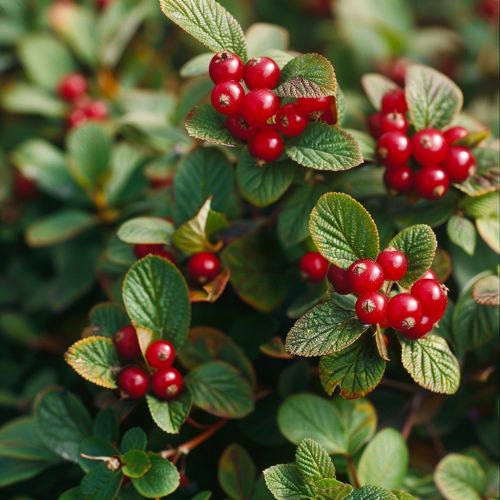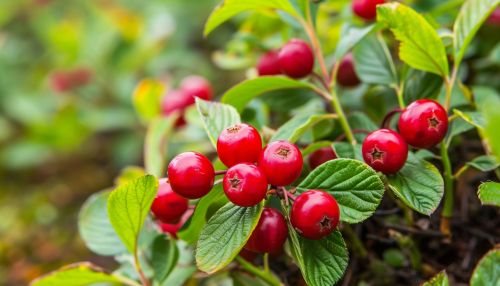Lingonberry
Overview
The lingonberry (Vaccinium vitis-idaea) is a small evergreen shrub in the heath family (Ericaceae) that produces edible red berries. It is native to boreal forests and Arctic tundra throughout the Northern Hemisphere, from Eurasia to North America. The lingonberry is known by various names, including cowberry, foxberry, and mountain cranberry. It has been a significant food source and traditional medicine for indigenous peoples in these regions for centuries.
Botanical Description
Lingonberry plants are low-growing, typically reaching heights of 10-40 cm. The leaves are small, leathery, and evergreen, with a glossy upper surface and a paler underside. The flowers are bell-shaped, white to pale pink, and appear in clusters. The berries are bright red, round, and about 5-10 mm in diameter. The plant thrives in acidic, well-drained soils and is often found in coniferous forests, heathlands, and alpine regions.


Distribution and Habitat
Lingonberries are widely distributed across the Northern Hemisphere. In North America, they are found from Alaska and Canada to the northern United States. In Eurasia, they range from Scandinavia and Russia to the mountainous regions of Central Europe and Asia. The plant prefers cool climates and is commonly found in boreal forests, tundra, and heathlands. It thrives in acidic soils with good drainage and can tolerate harsh winter conditions.
Ecological Role
Lingonberries play a crucial role in their ecosystems. They provide food for various animals, including birds, mammals, and insects. The berries are a vital food source for species such as bears, foxes, and grouse. The plant also contributes to soil stabilization and nutrient cycling in its native habitats. Lingonberries form symbiotic relationships with mycorrhizal fungi, which enhance nutrient uptake and support plant health.
Cultivation and Harvesting
Lingonberries are cultivated for their fruit in several countries, including Sweden, Finland, and Russia. The plant is propagated through seeds, cuttings, or division of rhizomes. Commercial cultivation requires well-drained, acidic soils and a cool climate. Harvesting typically occurs in late summer to early autumn when the berries are fully ripe. The berries are hand-picked or mechanically harvested, depending on the scale of production.
Nutritional and Medicinal Properties
Lingonberries are rich in vitamins, minerals, and antioxidants. They contain high levels of vitamin C, vitamin E, and dietary fiber. The berries are also a source of polyphenols, including flavonoids and tannins, which have been linked to various health benefits. Traditional medicine has used lingonberries to treat urinary tract infections, digestive issues, and inflammation. Modern research supports some of these uses, particularly the antimicrobial properties of the berries.
Culinary Uses
Lingonberries are a staple in Scandinavian cuisine. They are often used to make jams, jellies, sauces, and syrups. The berries have a tart flavor, which pairs well with both sweet and savory dishes. Lingonberry sauce is commonly served with meat dishes, such as Swedish meatballs and game meats. The berries are also used in baked goods, desserts, and beverages. In North America, lingonberries are sometimes used as a substitute for cranberries in recipes.
Economic Importance
The lingonberry industry is significant in several countries, particularly in Scandinavia and Russia. The berries are harvested both from wild populations and cultivated fields. Lingonberry products, such as jams, juices, and dietary supplements, are exported globally. The plant also has potential for use in horticulture and landscaping due to its ornamental value and hardiness.
Conservation and Sustainability
Wild lingonberry populations are generally stable, but habitat loss and climate change pose potential threats. Conservation efforts focus on protecting natural habitats and promoting sustainable harvesting practices. Cultivation of lingonberries can also reduce pressure on wild populations. Research into the genetic diversity and adaptability of lingonberries is ongoing to support conservation and breeding programs.
